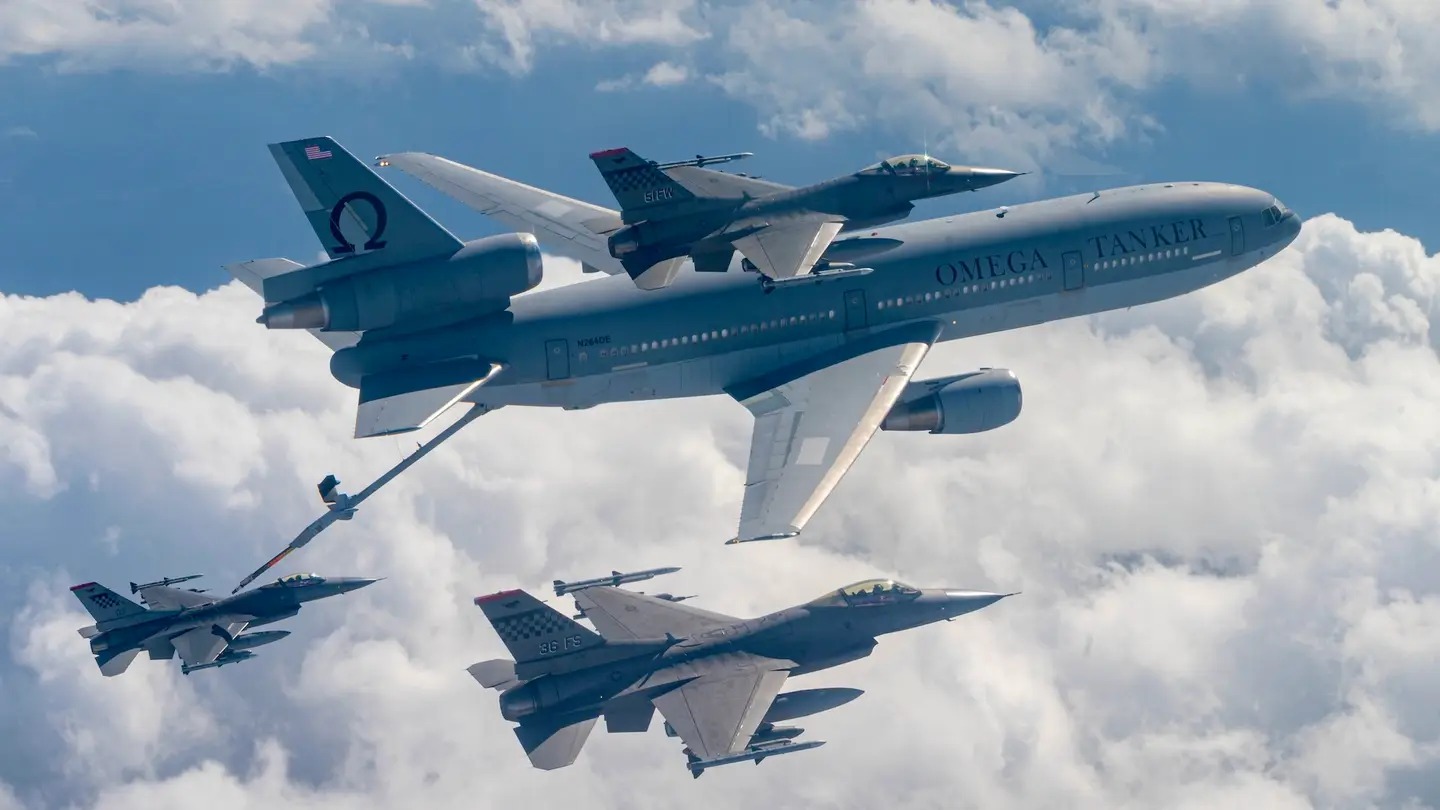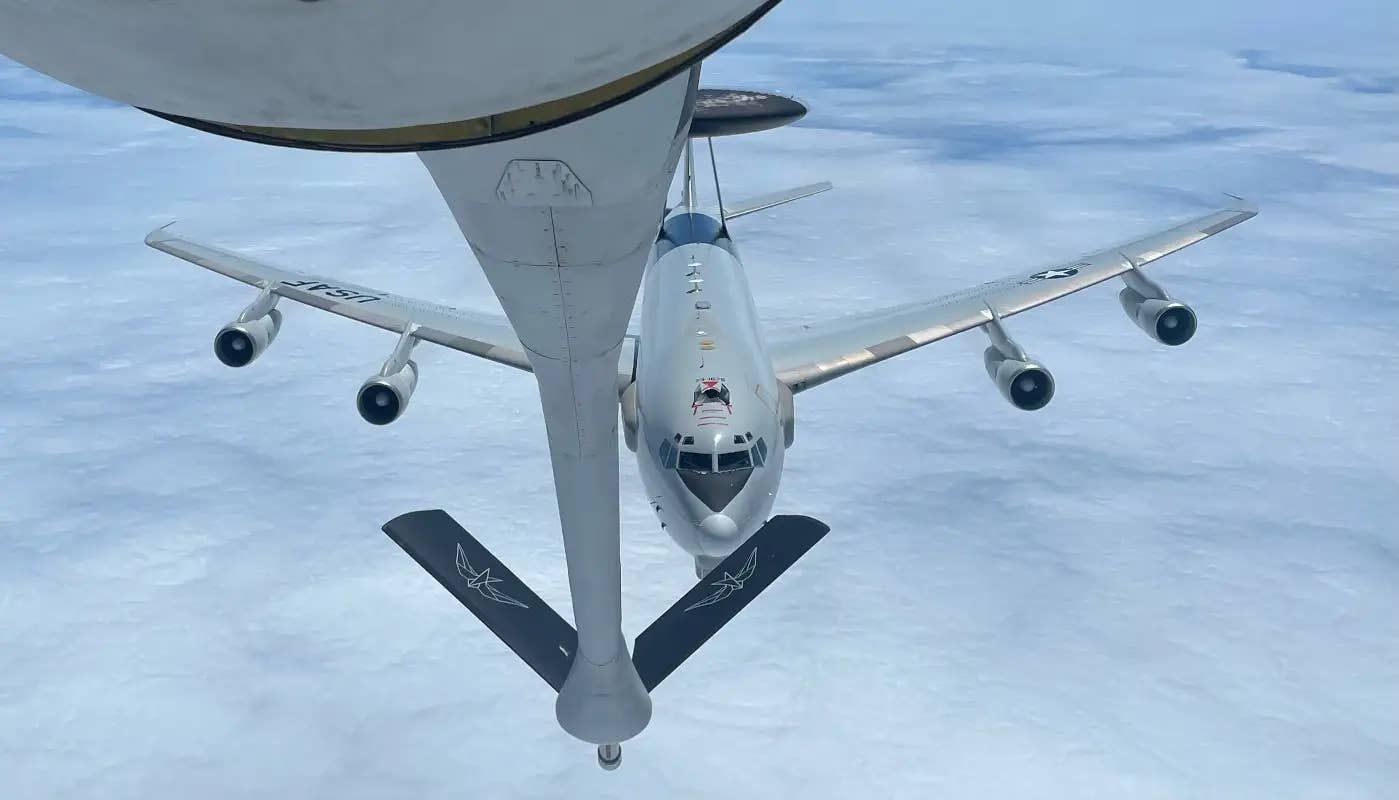The United States Air Force has announced that it has achieved a key milestone by performing the first in-flight refueling of fighter jets — specifically, F-15Cs, F-16s, and F-22s — utilizing a commercial tanker.
Stealth On Stealth: US Navy Is Arming Its F-35 Stealth Fighters To The Teeth To Checkmate Enemy Defenses
On November 6, the commercial KDC-10 aerial refueling tanker, serial number N264DE, took off from Osan Air Base with four F-16s, heading to Paya Lebar Air Base in Singapore for the Commando Sling 2023 exercise.
Backed by the Pacific Air Forces (PACAF) and involving the Republic of Singapore Air Force, this bilateral training aimed to enhance interoperability between the two nations’ air forces.
Notably, the KDC-10 demonstrated its versatility by refueling not only F-16s but also US Air Force F-15C Eagles and F-22 Raptors during the journey, highlighting the collaborative and comprehensive nature of the operation.
Lt. Col. Curtis Holtman, Pacific Air Forces air mobility operations chief, said, “Just this past Summer, a commercial refueling company was able to refuel an Air Force E-3 and an RC-135 in coordination with Air Combat Command during an exercise.”
He added, “We’re expanding that aperture in PACAF and identified a proof-of-concept employment to refuel fighter aircraft during exercise Commando Sling 23.”
In addition to its refueling capabilities, the service reported that the KDC-10 was loaded with over 40 passengers participating in the exercise and carried four pallets’ worth of cargo. This highlighted the aircraft’s dual-role capability for both airlift and refueling operations.

The service emphasized that achieving this proof-of-concept is pivotal for the Air Force. It demonstrates a critical capability that the Air Force can strategically leverage, facilitating increased exercises while concurrently sustaining immediate mission readiness.
Holtman explained that commercial air refueling for exercise-related movements, specifically in unit readiness training from point A to point B, enables the warfighter tanker fleet to remain prepared for prompt responses to unforeseen contingency requirements. This approach represents an additional mechanism for enhancing overall warfighter readiness.
What Significance Does This Development Hold for The US Air Force?
The recent in-flight refueling represents a significant advancement in the US Air Force’s ongoing efforts to enhance its capabilities, particularly in expanding the utilization of commercial tankers.
The service has been actively considering the integration of privately-owned aerial tankers into its operations for an extended period, aiming to relieve pressure on its tanker fleet and allocate resources to critical combat and high-priority missions.
In a noteworthy development earlier this year, a commercial tanker successfully refueled an E-3 Sentry and an RC-135 Rivet Joint during an Air Combat Command exercise.
The recent refueling during the Commando Sling exercise involved a KDC-10 aircraft, as confirmed by the service, with photographic evidence showcasing the tanker bearing the markings of Omega Air Refueling.
Omega Air Refueling, established in 2004 and based in Virginia, has been a prime contractor for commercial refueling services to the US Navy since 2007. The company also extends its support internationally, aiding the air forces of key US allies, including Australia and NATO nations.

Omega Air Refueling operates a relatively small fleet consisting of three KDC-10s. The first tanker, identified by the serial number N974VV, became a part of Omega’s fleet in 2006.
This particular aircraft transformed from a McDonnell Douglas DC-10-40 configuration to specialize in probe-and-drogue refueling.
The other two tankers, N264DE and N235UL, were originally McDonnell Douglas DC-10-30s from the Royal Netherlands Air Force.
Delivered to Omega in 2019 and 2021, these aircraft underwent modifications to adapt to boom refueling. However, limited information has been available about the activities and utilization of this N264DE aircraft.
In addition to the single probe-and-drogue refueling KDC-10, Omega possesses three KC-707 tankers utilizing the same refueling system. In 2015, an Omega KC-707 played a pivotal role in achieving the first aerial refueling of the Navy’s X-47B Unmanned Combat Air Vehicle demonstrator.
Another player in the private sector operating boom-equipped tankers is Metrea, a firm headquartered in Washington, DC. The company’s fleet comprises four KC-135R aircraft acquired from the Republic of Singapore Air Force in 2020.
Metrea made history in April by becoming the first contractor to boom-refuel a US military aircraft, the Navy P-8A Poseidon, in a training exercise off the Florida coast.
Continuing its efforts, the company secured another milestone in July by being the first contractor to refuel any Air Force aircraft. This achievement occurred during Exercise Resolute Hunter 23-2, where Metrea successfully refueled E-3 Sentry and RC-135 Rivet Joint Spy platforms using a KC-135R tanker.
- Contact the author at ashishmichel(at)gmail.com
- Follow EurAsian Times on Google News




